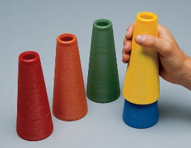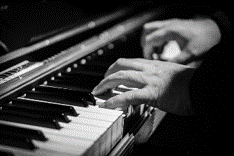Neuroplasticity and the Brain Following Stroke
- Well & Good

- Jul 12, 2020
- 2 min read
Written by Neurorehabilitation Physiotherapist Amelia Petherick (BPhty, MPhty, NZRP, MPNZ)
The brain is incredibly complex and there is still a lot we don’t know about how it works. One thing we do know is its ability to re-mould itself in response to new demands. This is known as “neuroplasticity”, meaning that the brain is like plastic and able to be remoulded. Neuroplasticity is key to recovery after stroke and there are some factors that you can control that will increase the opportunity for neuroplasticity and increase your potential for recovery.

Neuroplasticity after stroke can assist in the achievement of new, improvement of and re-attainment of skills. Immediately following a stroke, there is some spontaneous recovery of the areas of brain around the site of the stroke and following that, changes and improvements are largely due to neuroplasticity.
Neuroplasticity has no time limit. There are some old-fashioned theories that you may still hear that recovery is limited to “X” number of months after a stroke (often 6 months, or one year were often previously quoted). This is not true! Yes, recovery is greater, early after a stroke but with the right demands, the brain can continue make changes life-long.
In relearning a task after stroke, there are principles, that you can control, that increase the potential for neuroplasticity and recovery after a stroke (Kleim et al, 2008) These are:
Use it or lose it – studies where there has been amputation of a digit 2-9 months later show the area of the brain that used to control that digit is now assigned to other digits (Merzenich et al,1984). In relation to stroke recovery, this means using your affected arm/leg. Tasks with both hands/legs are often a good way to start.
Use it and improve it – once you’ve used your affected arm/leg and made improvements, make the task harder to continue to challenge yourself.
Specificity – use a specific task. Sitting opening and closing your hand is not very specific. Instead focus on a task that is specific such as reaching to grasp a paint brush or mug or trying to play the keys on the piano and you’ll get better results.
Repetition – practice, practice, practice!
Salience – It needs to be relevant to you! If you want to be able to reach and grip with your hand, then reaching into thin air or to a cone is not relevant. If you’re a horse rider, reach to pick up a bridle. If you enjoy gardening practice picking up a garden fork. If putting on make up is important to you, practice reaching for your foundation. If you enjoy fishing, pick up your rod and practice with the reel.
So practice, make it challenging enough but also specific and meaningful to you.
Amelia has extensive experience working with people with neurological conditions (in particular strokes, traumatic brain injuries, spinal cord injuries and multiple sclerosis) along with general rehabilitation conditions such as falls and deconditioning. She draws on a mixed toolbox of treatment techniques tailored to empower each individual client to meet their potential. To book in to see Amelia please get in touch via the contact details below.
Well & Good | Phone: (03) 5778999 | Email: hello@wellandgoodhealth.co.nz






Comments